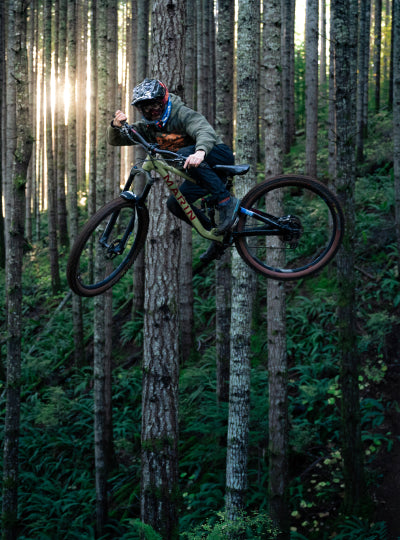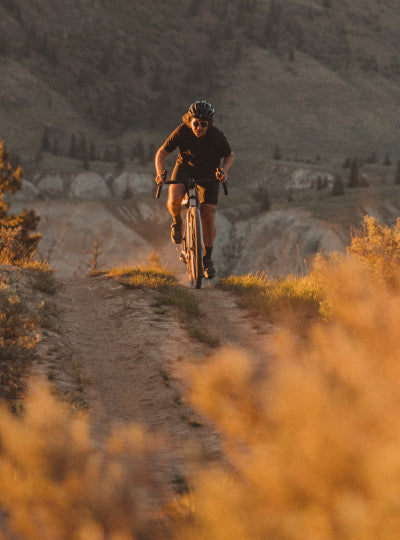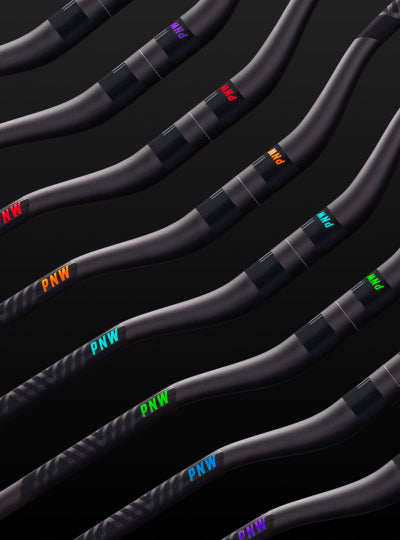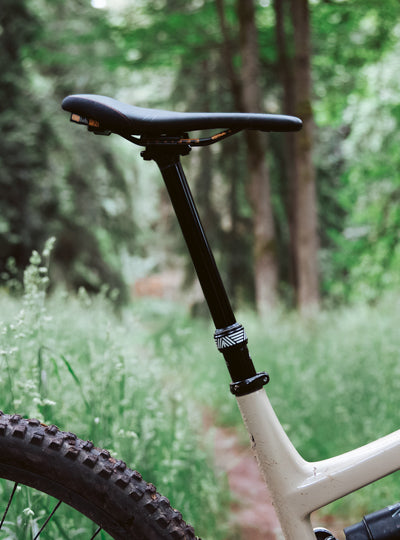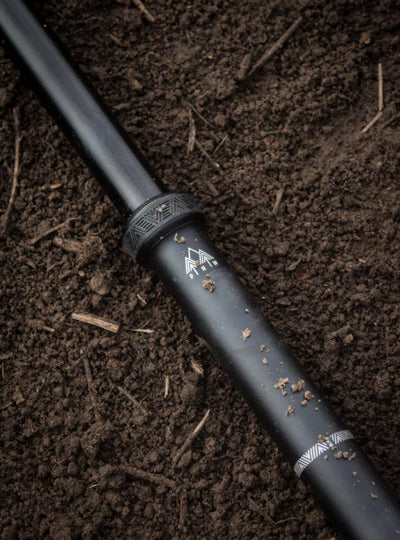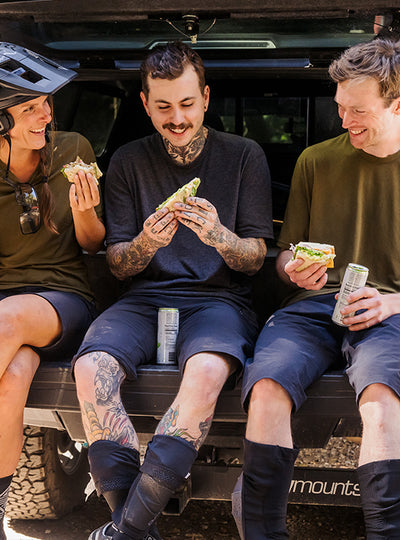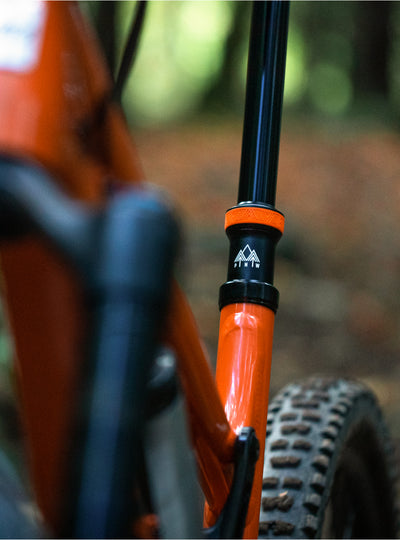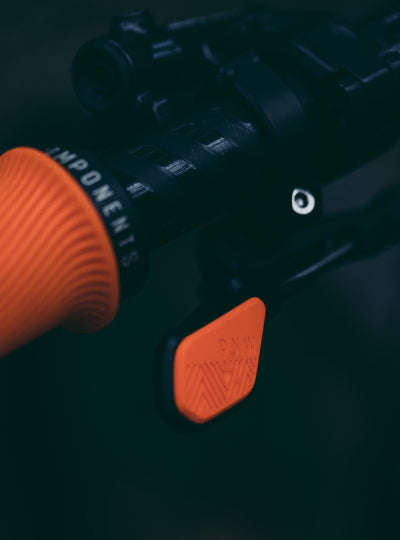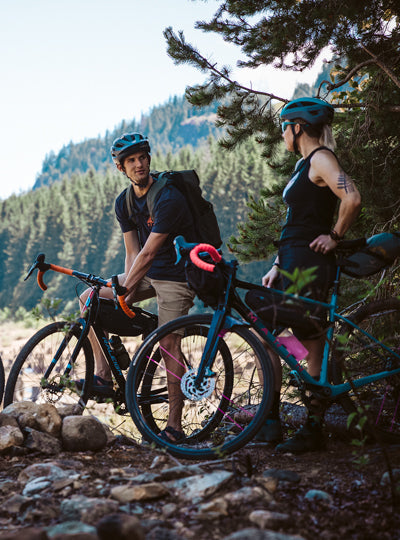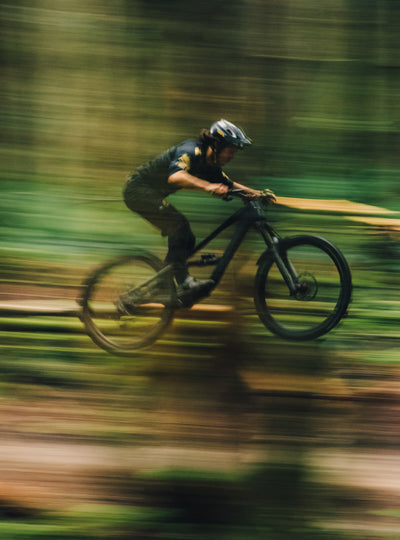The all-new Loam Pedal Gen 2 was designed from the sole up for a better-than-ever riding experience. We sat down with PNW Director of Product TJ Trotter to get the scoop on what led to the improvements of this new generation of pedals. From spreadsheets of media feedback to extensive ride testing, we took our time to get it right. With an all-new platform design, easy-to-service sealed cartridge bearings, and the use of innovative Tectonic™ pins, they’re the flat pedal that will turn you into a flats-for-life kind of rider.
How did the PNW product team approach outlining the improvements that you wanted to make to the Second Generation of the Loam Pedals?
TJ Trotter: So, we started with the Gen 1 pedal, and we did a really thorough deep dive into media feedback for the pedals, and we also just talked to a lot of people in the industry and our friends who are avid flat pedal riders. We gathered as much feedback as we could, whether it was from athletes, friends, colleagues, or the media.
We cataloged all of that feedback, and we boiled it down into a few different categories. We tallied up those categories so we could isolate the biggest issues with the pedals. And those were the items that we targeted.
After reviewing all of the feedback there were two pillars that we focused on We wanted to improve on serviceability and durability.
We also wanted to improve on the pedal design.
Within the pedal design pillar, we found that the Gen 1 was kind of polarizing. A lot of people loved it, and other people didn't mesh well with it. And so we looked at what shoes they were riding in, what kind of terrain they were riding, what kind of bikes they were using, and their foot placement. And that was really what we determined the issue to be, the polarizing factor was where you put your foot on the Gen 1 Loam Pedal, and that determines how riders feel about the pedals.
That's how we realized that midfoot riders love the Gen 1 Loam Pedal, and forefoot riders prefer a less convex profile, and that's how we tackled the design theory for the Gen 2. How could we create a platform design that accommodates all types of riders in terms of their foot placement?
How do you define a midfoot rider or a forefoot rider? What does that mean?
TJ Trotter: So it's a range. It's not like there are only two camps. You could be anywhere between the forefoot and the midfoot. However, we found that a lot of people ride with the pedal axle in the middle of their foot, like right under their arch, and a lot of people ride with the axle under the ball of their foot.
How des the new Gen 2 platform design cater to both forefoot and midfoot riders?
TJ Trotter: Yeah, great question. So for forefoot riders, we added a concave profile from the front to back and side to side, measuring 1.5mm’s in each direction. This gives the ball of their foot a nice pocket to sit into, creating a comfortable platform to push off of.
For midfoot riders, we added the 1.5mm tall “towers” over the axle on the inside and outside of the pedal. This creates a convex platform that the sole of their foot can comfortably wrap around. These towers also contribute to easier foot repositioning for both positions.
What are the main differences in how this new pedal is manufactured versus the Gen 1?
TJ Trotter: So, the Gen 1, we took a forged approach, and there are some benefits to a forged pedal body, but for the Gen 2, we wanted to step up the pedal in terms of quality. So, we went for a fully CNC’d pedal body. And what this allows us to do is to get really precise with the pedal design, in which areas we can cut out and leave. It gives us a lot more flexibility in terms of the machining, like the textures you see over the axle, things like that. It is a little bit more of a costly manufacturing method, but given our design intentions for the pedal, it made the most sense to go with the CNC method.
What is the Tectonic™ pin system?
TJ Trotter: Tectonic™ is a really innovative pin technology. It's a small company and an inventor based out of Durango, Colorado. And basically, it's a pin design that’s two pins in one. It's the upper and the lower pin on the platform. It allows for a stacked platform design, which we prefer because it doesn’t require having two holes for every pin location, which is a huge bonus for us in terms of platform durability.
The pin design uses a set screw coming from the side to lock in the upper and the lower pin. And what this allows you to do is a few different things. First, it allows for easy and quick pin maintenance. By removing one set screw, you can replace two pins which just makes things quick and easy.
The other thing is, they have a breakoff technology built in, so if they do receive a really heavy impact, they will break off and they won't damage the pedal body. A lot of pins that thread into the pedal body, if they get broken off or damaged, either during impact or during the removal process, they damage the pedal body. So, by having these Tectonic™ pins that slide in and out without threads, it prevents the platform from getting damaged during the impact or during removal.
Ease of maintenance, durability, those are the two biggest assets to the Tectonic™ pin system, and of course they also provide great grip.
The breakoff feature was something I didn't even know about.
TJ Trotter: Yeah, they are designed to break off right at the bottom. It's not easy. You really got to smack them on something. There are two extras in every Loam Pedal box, so we’ve got you covered on at least two. Pin kits are also pretty cheap if you need any additional ones. And, like I've said, it just ensures that your platform is good to go for a lifetime.
Sweet. I smacked them pretty hard on some rocks this weekend, and they're fine, didn’t break away.
TJ Trotter: Good.
I guess I didn't smack them hard enough.
TJ Trotter: Yeah, maybe next time.
What type of riding are the new Loam Pedals for?
TJ Trotter: We wanted to ensure that the Gen 2 Loam Pedals would be durable enough for any type of riding. We went ahead and had them tested to CAT 5 EFBE. That means that they're durable enough for all types of downhill, e-bikes, free ride, whatever you can throw at them. They are third-party lab tested and proven to withstand that. However, they're light enough and grippy enough, to where if you wanted to use them for just general trail riding, they're a great option. So really anything, commuting, even gravel. There's no type of riding that these pedals wouldn't be great for.
What have you noticed about how they perform on the trail? And what's exciting about them to you?
TJ Trotter: So, part of the development process after we did that media deep dive is that we did a ton of competitor testing. And one of the things that I was noticing with a lot of competitor pedals is that it's pretty difficult to reposition your foot at speed.
We wanted to make the Gen 2 as grippy as possible, but we also really wanted to ensure that you could reposition your foot at speed. It's a huge bummer when you're descending, maybe a technical portion of trail, like say you've climbed for an hour and you're finally going downhill, and your foot gets bumped. It's inevitable. It will happen where your foot gets bumped out of place. But we wanted to have the ability to quickly and easily reposition your foot without having to slow down. I am really pleased that we found a sweet spot where we have great traction, but also we offer the ability to reposition your foot at trail speed.
How did you do that?
TJ Trotter: In our design, we wanted to ensure that the platform worked well for all foot placements. And what that resulted in was these two kind of “towers” on the inboard and outside of the pedal.
And these towers, they allow for a couple of different things. For one, it allows a convex profile of the pedal platform for midfoot riders, but also it gives you a platform to push off of when you're repositioning your foot. So, without these towers on the inboard and outside of the pedal over the axle, it would be much more difficult to reposition your foot at trail speed.
Have you been pleased with the performance of the platform design?
TJ Trotter: Oh yeah. I think they're super comfortable. As a midfoot rider I've noticed foot fatigue with a lot of other pedals, especially dedicated concave pedals, in the past. I haven't noticed that with these pedals at all. Foot placement and repositioning have been a lot easier. I'm also really happy with how the inboard pins engage with your foot. A lot of pedals have the inboard pins a lot closer to the crank arm, and your shoe ends up missing them. We bumped in the inboard pins out on the Gen 2 Loam Pedal, and I've been really happy that when I look down, my shoes are actually engaged with that inboard pin.
What was a key motivator in making improvements to the new generation of pedals?
TJ Trotter: Serviceability. It is often difficult to service pedals, many times they require special proprietary tools, hammers, presses, which also in turn require a vice or some type of specialized tools that most people don't have. So, we wanted to make it as easy as possible to service. If you have access to a pair of pliers and an Allen wrench, you're good to go. Maybe it's an adjustable crescent wrench, a socket wrench, take your pick. There are a lot of tools that can easily service the Gen 2 Loam Pedal. So, we made it as easy as possible.
Any special details about the Gen 2 Loam Pedals that we haven't heard about yet?
TJ Trotter: Well, we have an exciting feature that is the cartridge axle that we developed. This is a PNW product that we developed from the ground up, and it's proven to be really durable, but also I just love how easy it is to service. One of the things that we decided when we were developing the cartridge axle system is the size the cartridge nut should be on the end. We went with 18mm because if it were any smaller, you wouldn't be able to fit a socket wrench over it. We wanted to allow users to use whatever tools they had access to. And if a socket wrench is kind of your go-to tool, you can easily slip an 18 mm axle socket wrench right over the end and loosen the cartridge that way.
Our engineer, Joey, also developed what he's calling a quad seal. And it's a seal on the inside of the cartridge sleeve that prevents dirt, grime, and anything else from actually accessing that space between the axle and the cartridge sleeve. There's also an O-ring on the outside that does a really good job of preventing any type of dirt and crud from getting in there.
Are you a flat pedal guy or do you ride clipless?
TJ Trotter: Flats all day, even on my gravel bike. A lot of people give me flak, but flats. I like to stop at the brewery halfway and not be clanking around the shop.
I had to ask that question since Brandon is stirring s*** on Instagram again…
TJ Trotter: Haha. Yeah. It's nice to be able to reposition your foot easily, and I love the ability to descend on flat pedals. I feel like I can descend so much better because I can rotate my feet, and that allows me to rotate my hips to where I can really lean the bike, and I can ride, especially descending, so much better on flat pedals.
So they're made for party, is what you're telling me?
TJ Trotter: Yeah. I will take a little bit of a less efficient climb to have more fun descending all day. I used to exclusively ride clipped in for like 10 years, and then I moved to Washington, where they have huge jumps, and I was like, alright, I can't be bailing on jumps midair, doubles, 20, 30, 40-foot doubles clipped in, that's just not safe. So that's when I really started riding flats, so I could bail more easily on jumps. And then I realized how much better I could descend. And I've been flats for life ever since.
